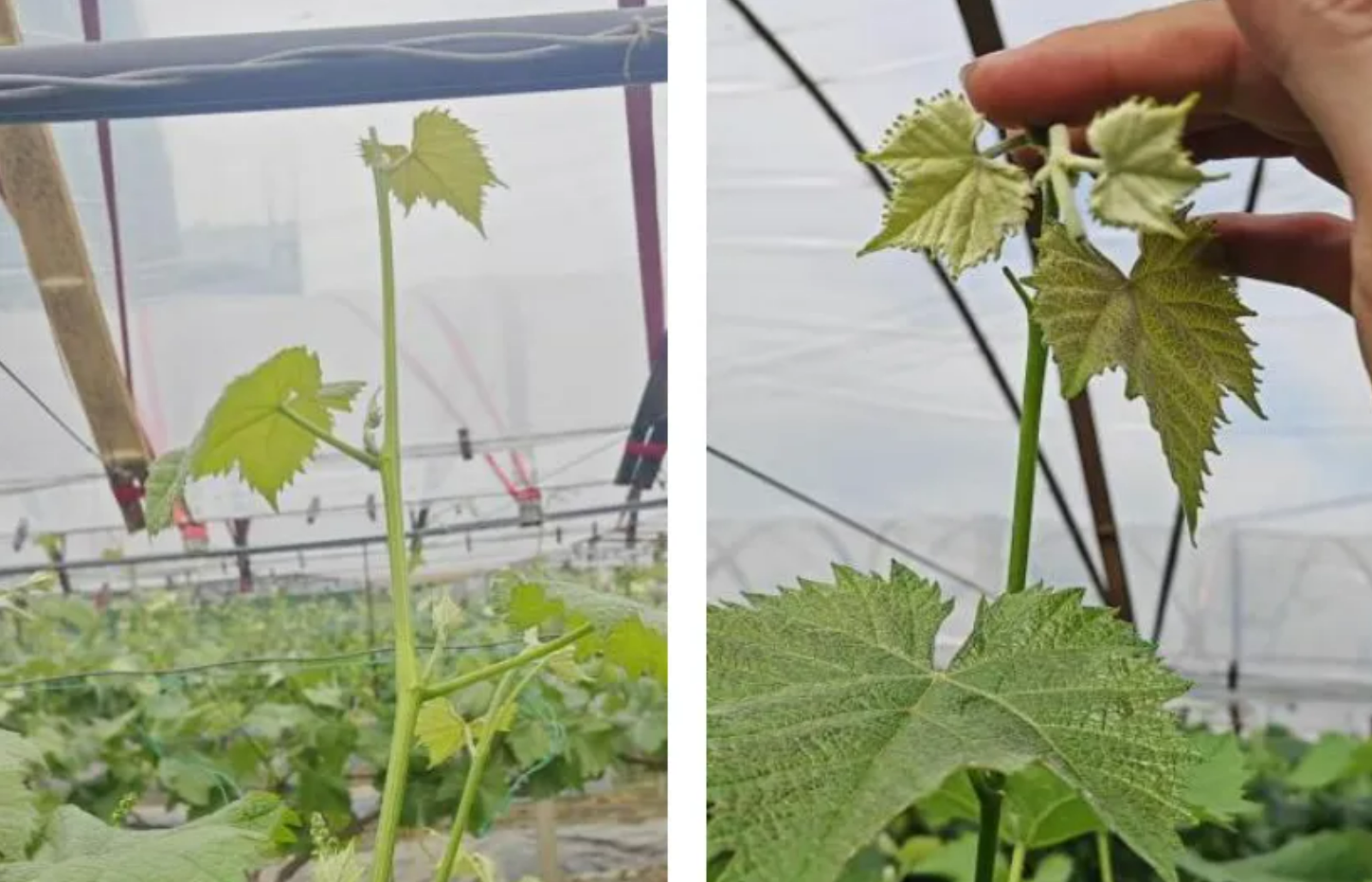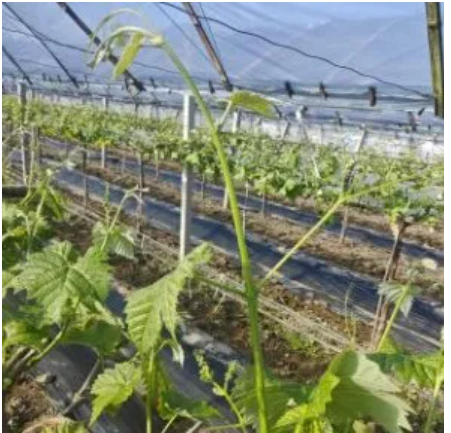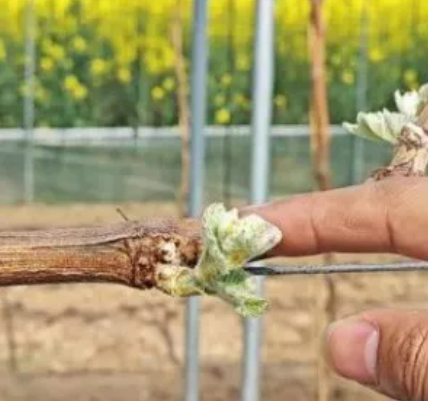Centering operation of Shine-Muscat
Centering refers to slowing down the apical dominance by removing the top growth point of the branch, thus realizing the balance between nutrient growth and reproductive growth in the tree. Regarding Shine-Muscat's centering operation, some people say to center 2-3 leaves on the flower, some say to leave 6 leaves on the flower and center it, some say to center it after putting it all at once, and the specific practice has many different opinions. Today, let's discuss the centering operation of Shine-Muscat.

Heavy centering means that the leaves left after centering are at least the size of an egg. At this time, the photosynthesis carried out by the leaves can already meet the needs of their own growth, that is, after centering, the nutrients immediately back to the flow, suitable for the case of poor flocculation separation.

Light centering, refers to the size of the fingernail cap of the leaves left after centering. At this time, the photosynthesis carried out by the leaves can not meet their own growth needs, will continue to rob the nutrients for a period of time, i.e., after centering the nutrients gradually flow back to the flowers, suitable for the florets to separate the situation of the better.

If there are only a few branches of the tree, and the internodes are too long, we can use the “flower on a leaf” centering operation, so as to achieve the purpose of controlling the boom. This can avoid the final number of leaves due to the continued elongation of the internode. At the same time, nutrient competition should be reduced to avoid suppressing the growth of other branches. We need to pay attention to when the flower on the 1 leaf centering, first do not erase the lower secondary tips, to avoid the occurrence of burst winter buds.

When the flower grows to 2-3 leaves on the flower, it is at the time of floret separation period, at this time to pick the center to let the nutrients flow to the floret, with the use of fertilizer. This will help promote floret separation. By the time the flower blooms, the branch will grow back to 3-4 leaves, and when it is centered again, there are already 6-7 leaves on the flower, so it won't affect flowering and bud retention because of the lack of leaf volume. This is a safe way of centering. However, for the early growth of secondary tips, we should be centering 5-7 days after the timely knocked off, this operation is relatively cumbersome, suitable for small park operations.

6-leaf centering on flowering refers to growing and releasing branches first and waiting until flowering before the first centering. This type of centering is suitable for areas with weak branch growth. This prevents the new leaves from growing late after centering, and the amount of leaves is not enough, resulting in severe grain drop. At the same time, this way of sub-tip growth is slower, in favor of saving labor and time, suitable for a larger area of the park. However, 6-leaf centering is not recommended in areas with strong branch growth. Otherwise, in the floret separation period, the branches and florets grab nutrients, which will have a restraining effect on the floret separation. And long release branches are easy to lengthen the internode, should pay attention to with pharmaceutical control.
In summary, the sunshine rose centering method needs to be combined with the local climate, tree potential and other specific circumstances to choose, to do so according to local conditions, according to the time research and judgment. We can adopt Monband® MBT PULI-NANO ® program.

Monband® MBT PULI-NANO ®, prepared from MBT© - Multi-Purpose Biostimulant, utilizes an advanced microbial enzymatic process and nano-suspension process and is enriched with a variety of highly active natural organic substances. It is beneficial for promoting healthy crop growth.





 Learn more
Learn more
 冀公网安备13019902000986
冀公网安备13019902000986